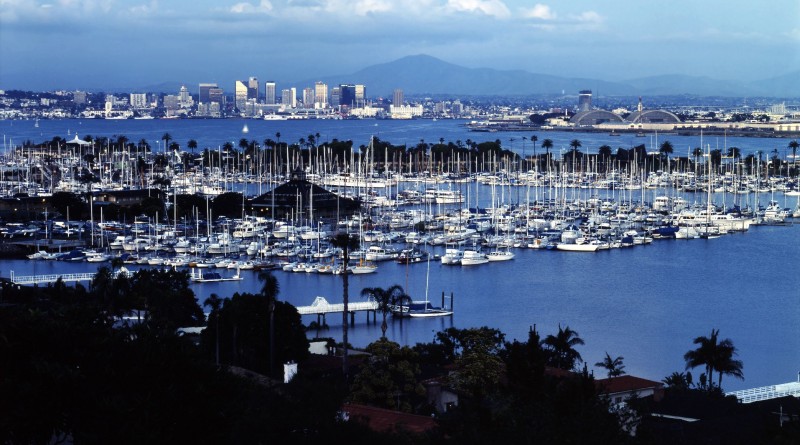Report: Water Board finds 40 percent reduction in copper load at Shelter Island
Regional Water Quality Control Board monitors TMDL in San Diego Harbor annually.
SAN DIEGO — The Port of San Diego is making progress in meeting its mandated copper reduction goals, according to a Regional Water Quality Control Board (RWQCB) report issued on March 30 and shared with the Board of Port Commissioners in May.
A Total Maximum Daily Load (TMDL) mandate was established by the RWQCB for Shelter Island Yacht Basin in 2005 in an attempt to reduce dissolved copper levels at the northern edge of San Diego Bay by 76 percent in four phases between 2005 and 2022.
San Diego’s RWQCB reported “a 40 percent reduction in copper load when compared to the Shelter Island Yacht Basin TMDL baseline,” a Port of San Diego memorandum stated.
“The [port] district continues to implement a variety of activities that are demonstrating copper reductions in Shelter Island and throughout the bay,” Karen Holman, the port’s planning principal, stated in the May 5 memorandum to commissioners. “Many of the 2015 initiatives focused on continuing efforts to encourage use of low leach copper paints and non-copper initiatives, improved data tracking, and ongoing outreach to stakeholders, state and federal agencies, and policymakers”
Shelter Island’s TMDL compliance schedule required the Port of San Diego to reduce copper levels by at least 40 percent of its mandated baseline (2,100 kilograms per year) by 2017.
“Vessel tracking indicates that there has been a reduction of [more than] 40.4 percent … in annual dissolved copper loading to [Shelter Island] from vessels when compared with the [Shelter Island] TMDL-assumed baseline loading,” Holman wrote in her memorandum.
The first phase of Shelter Island’s TMDL program was implemented in 2005. Phase 2 began two years later and required the port to reduce copper levels by 10 percent – to 1,900 kilograms per year of dissolved copper – by 2012. The third phase set an overall reduction goal of 40 percent by 2017 and met the target dissolved copper load to 1,300 kilograms per year.
The fourth and final phase, which would start in 2017, mandates the port meet the mandated goal of 76 percent copper reduction – 567 kilogram per year load – by 2022.
Several best management practice measures were implemented to reduce dissolved copper loads at Shelter Island, including the development of a hull paint guidance list and implementation of in-water hull-cleaning regulations, according to port staff.
All hull-cleaning businesses were required to obtain proper permits for their respective work. Boats with non-copper paints were given wait-list priority at Shelter Island’s marinas and yacht clubs. Use of slip liners and in-water lift systems were also encouraged.
The regional water board’s report was based on one year of water quality monitoring, vessel tracking and best management practice implementation from Jan. 1, 2015 to Dec. 31, 2015.
Port staff and members of a Shelter Island workgroup on TMDL are expected to meet with the RWQCB later this year to discuss findings and recommendations of the recently published report.
Holman said the port would be considering four proposed recommendations with respect to future monitoring activities: repositioning of a sampling station; conducting an enhanced water column study to assist with modeling; tracking low leach paints as a separate category; and, ensuring future TMDL reports include separate reports on dissolved copper load allocations from passive leaching and hull cleaning.
The port stated it believes it is making positive progress on converting vessels to alternative hull paints, increasing boater education and outreach, implementing best management practices, and conducting better accounting practices and survey methods to determine hull paint types.


